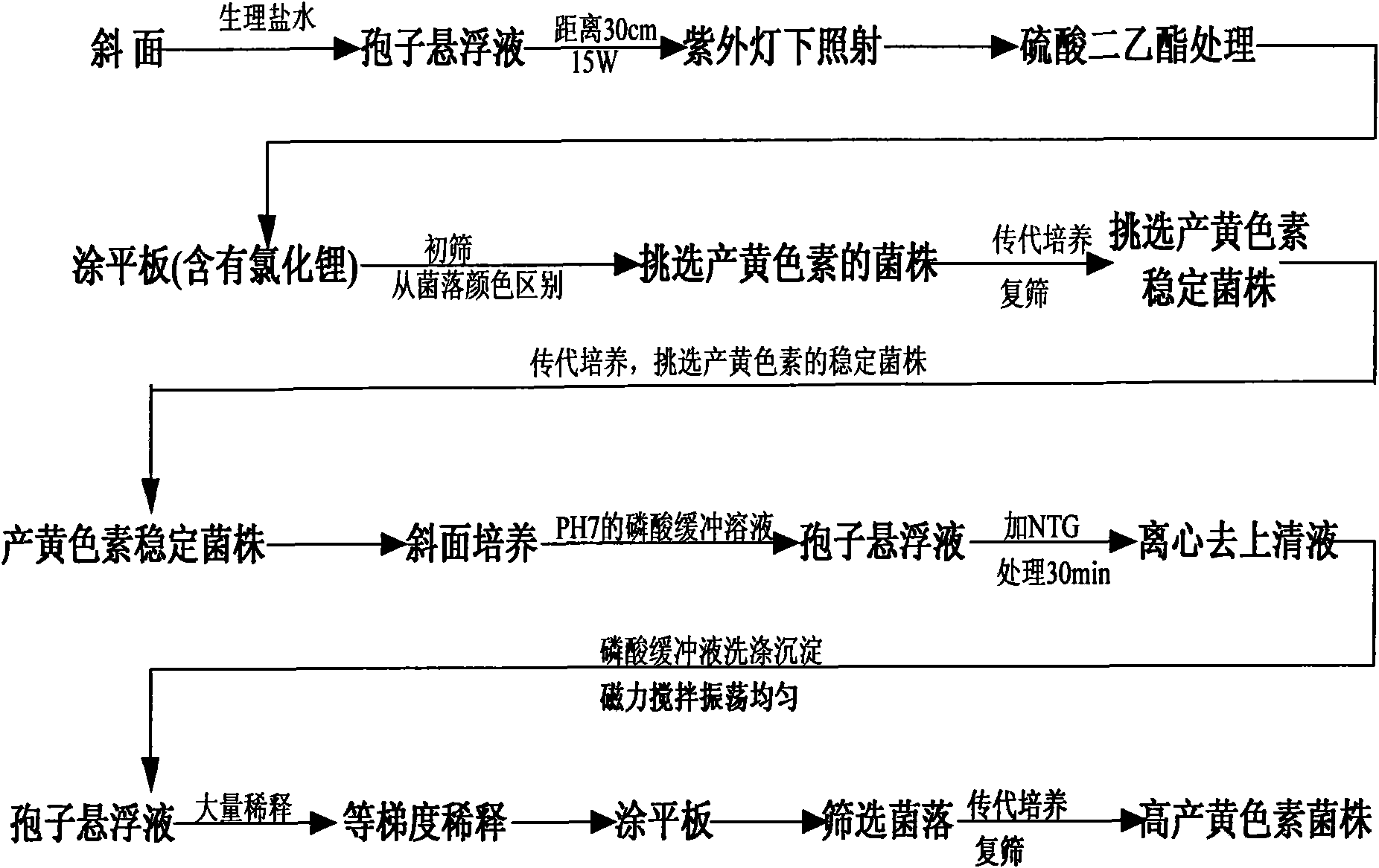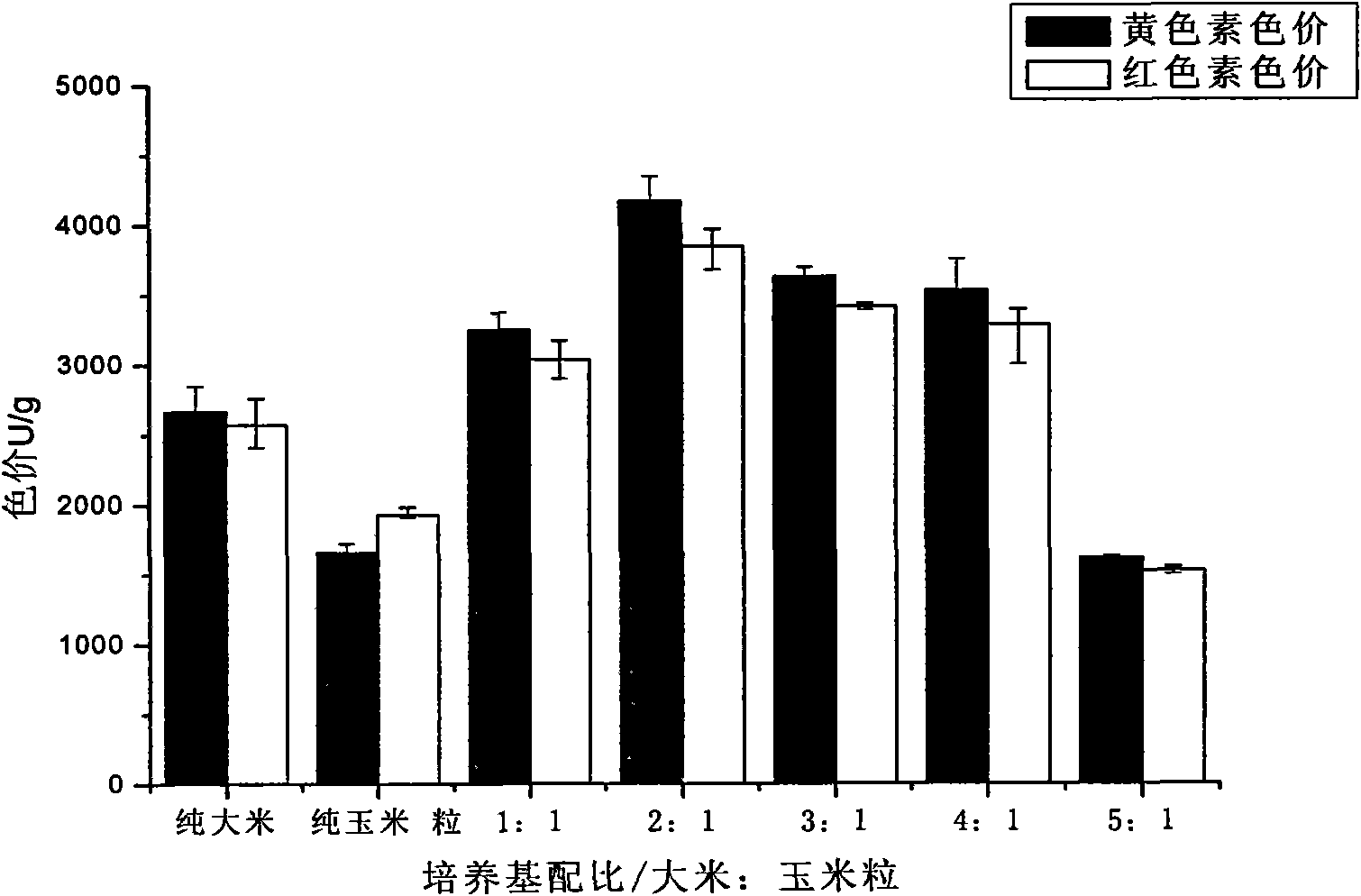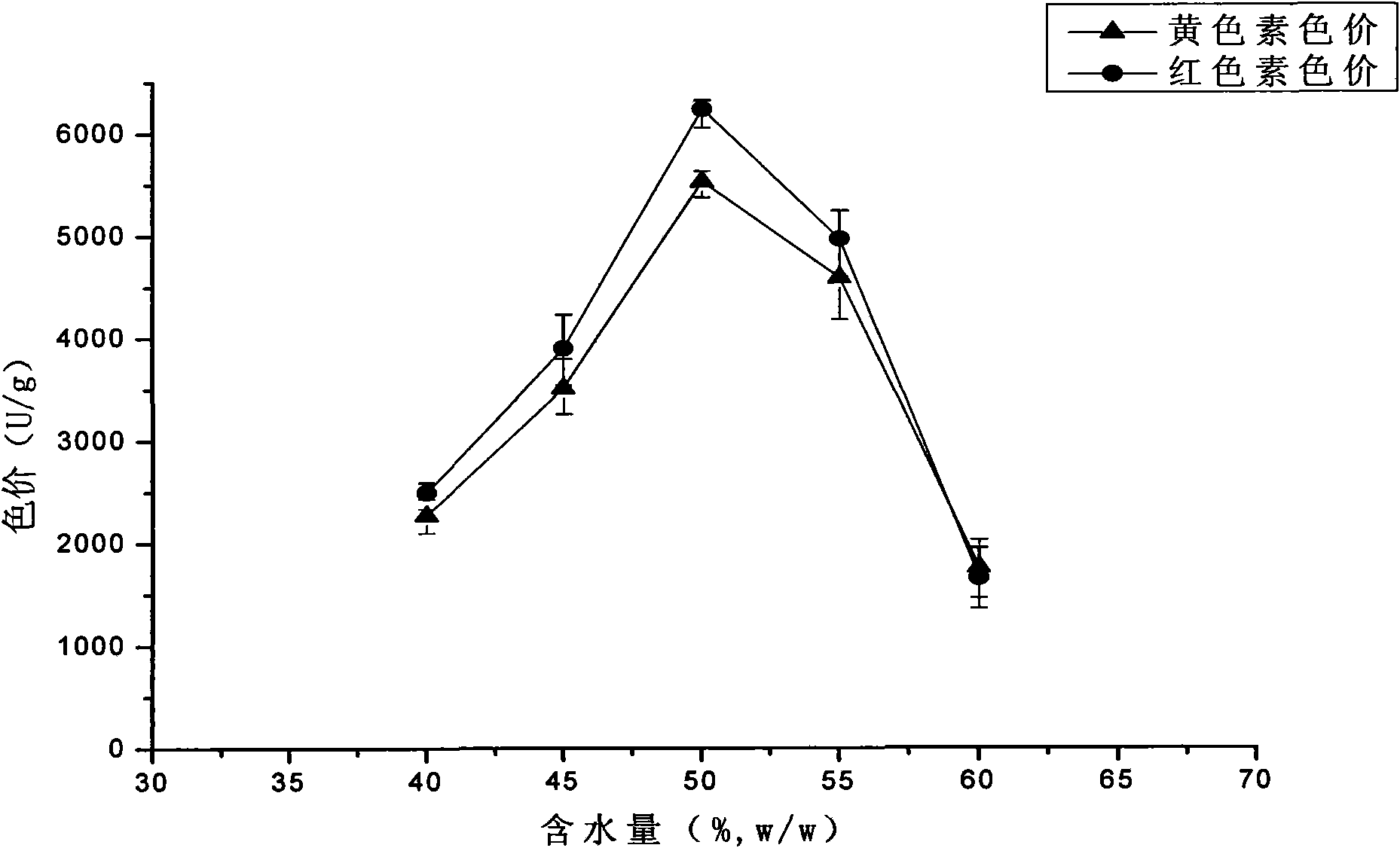Monascus anka, and solid-state fermentation color-production method and application thereof
A technology of solid-state fermentation and monascus, applied in fermentation, microbial-based methods, biochemical equipment and methods, etc., can solve problems such as difficult technology, cumbersome production, low color price, etc., and achieve the effect of low yield
- Summary
- Abstract
- Description
- Claims
- Application Information
AI Technical Summary
Problems solved by technology
Method used
Image
Examples
Embodiment 1
[0030] (1) Obtaining of Monascus mutant strain MA101:
[0031] The mutagenesis process as figure 1 As shown, the description is as follows:
[0032] A. Preparation of spore suspension: After culturing the slant of Monascus mutant strain MYM2 at 31°C for 2 to 3 days, wash the slant of the strain with 5mL of normal saline, break it up with glass beads, and filter it with sterile lens-cleaning paper to make spore-containing 1 ×10 5 individual / mL suspension.
[0033] B, mutagenesis: first carry out ultraviolet mutagenesis (18W ultraviolet lamp, irradiate 45s under the distance 30cm, magnetic stirring simultaneously, cover plate under red light and cultivate in the dark), then use diethyl sulfate mutagenesis (5mL spore suspension, Prepare 0.4mL of diethyl sulfate to a certain final concentration, shake for 30min, then add sodium thiosulfate to terminate the reaction, then spread the spore liquid on a plate containing 0.05% (w / w) lithium chloride for culture, and select colonies ...
Embodiment 2
[0043] (1) strain activation: with embodiment 1 step (2) 1.;
[0044] (2) Preparation of seed liquid: with embodiment 1 step (2) 2.;
[0045] (3) Solid-state fermentation: put 20g of solid fermentation medium in a 250mL triangular flask, inoculate 2ml of the shaker flask seeds prepared in step (2), and ferment for 9 days at 31°C and 80% humidity. ; The solid fermentation medium is a mixture obtained by mixing rice and corn kernels in a mass ratio of 2: 1, sterilized at 121°C for 15min, and the initial water content is respectively 40%, 45%, 50%, 55%, 60% ( v / w).
[0046] (4) Detection of pigment: same as step (2) ④ of Example 1. The result is as image 3 shown.
[0047] from image 3 It can be seen that when the initial water content is 50%, the color value of the obtained monascus pigment is the highest, the color value of the yellow pigment reaches 5525U / g, and the color value of the red pigment reaches 6232U / g.
Embodiment 3
[0049] (1) strain activation: with embodiment 1 step (2) 1.;
[0050] (2) Preparation of seed liquid: with embodiment 1 step (2) 2.;
[0051] (3) Solid-state fermentation: put 20g of solid fermentation medium in a 250mL Erlenmeyer flask, inoculate the shake flask seeds prepared in step (2), the inoculum amounts are 1.6ml, 2ml, 2.4ml, 2.8ml, 3.2ml respectively, at 31°C, 80% humidity, tilting and fermenting for 9 days, in the middle stage of cultivation (4.5d), turn over the koji and replenish water by 20% (v / w); the solid fermentation medium is a mixture obtained by mixing rice and corn kernels in a mass ratio of 2:1, Sterilize at 121°C for 15 minutes, and the initial water content is 50% (w / w).
[0052] (4) Detection of pigment: same as step (2) ④ of Example 1. The result is as Figure 4 shown.
[0053] from Figure 4 It can be seen that when the inoculum volume is 2.4ml, the color value of the pigment is the highest, the color value of the yellow pigment is 4992U / g, and ...
PUM
 Login to View More
Login to View More Abstract
Description
Claims
Application Information
 Login to View More
Login to View More - R&D
- Intellectual Property
- Life Sciences
- Materials
- Tech Scout
- Unparalleled Data Quality
- Higher Quality Content
- 60% Fewer Hallucinations
Browse by: Latest US Patents, China's latest patents, Technical Efficacy Thesaurus, Application Domain, Technology Topic, Popular Technical Reports.
© 2025 PatSnap. All rights reserved.Legal|Privacy policy|Modern Slavery Act Transparency Statement|Sitemap|About US| Contact US: help@patsnap.com



